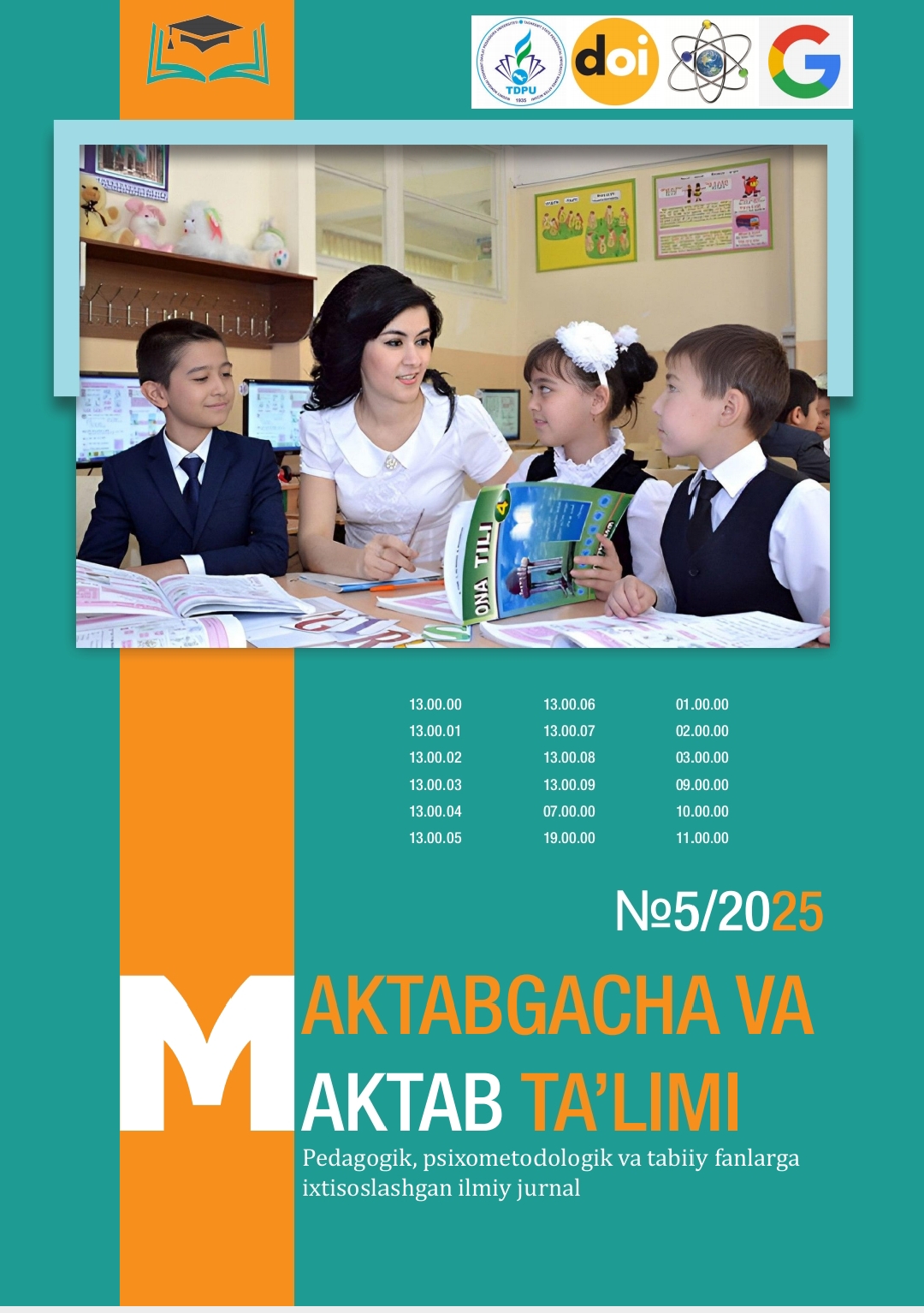Formation of Cultural Tolerance in Preschool Children Through Foreign Language Learning Using Digital Educational Resources
DOI:
https://doi.org/10.5281/zenodo.15427125Ключевые слова:
cultural tolerance, preschool education, foreign language learning, digital educational resources, multilingualism, early childhood development, interactive learning, gamification in education, cognitive flexibility, social empathy, digital literacy, intercultural competence, augmented reality in education, virtual exchange programs, bilingual education, educational technology, pedagogical frameworks, cultural awareness in early childhood, ai in language learning, playbased learning approachesАннотация
This study explores the impact of digital educational resources on fostering cultural tolerance among preschool
children engaged in foreign language learning. By integrating interactive digital tools into early childhood education, we
aim to assess how exposure to diverse languages and cultures influences young learners’ acceptance and understanding
of cultural differences. The research highlights the transformative potential of digital platforms in shaping children’s attitudes
toward cultural diversity, emphasizing their role in enhancing both linguistic proficiency and cross-cultural awareness.
Interactive educational applications, virtual exchanges, and multimedia storytelling tools provide young learners
with immersive experiences that deepen their engagement with different cultures, fostering empathy, curiosity, and appreciation
for diversity. Through gamified learning, audiovisual aids, and real-world conversational contexts, digital resources
create an inclusive environment that supports early language acquisition while simultaneously promoting intercultural
competence. Our findings suggest that digital educational tools not only aid in language development but also encourage
social inclusivity by reducing biases and increasing openness to different cultural perspectives. The study underscores
the importance of incorporating culturally authentic, age-appropriate, and pedagogically sound digital content to maximize
its effectiveness in fostering cultural tolerance. Future research could explore the long-term effects of digital cultural education
on young learners, assessing its influence on their social interactions, cognitive development, and global awareness.
Additionally, investigating the integration of emerging technologies such as artificial intelligence-driven language
learning, virtual reality cultural simulations, and collaborative digital storytelling could further enhance the potential of
digital education in shaping the next generation’s multicultural adaptability and global citizenship
Библиографические ссылки
Kinzler, K. D., & Liberman, Z. (2017). Infants’ and Young Children’s Perception of Linguistic and Cultural Groups. Child
Development Perspectives, 11(1), 1-6.
Bialystok, E., & Craik, F. I. M. (2010). Cognitive and Linguistic Processing in the Bilingual Mind. Current Directions in
Psychological Science, 19(1), 19-23.
Hoff, E., Core, C., Place, S., Rumiche, R., Señor, M., & Parra, M. (2012). Dual Language Exposure and Early Bilingual
Development. Journal of Child Language, 39(1), 1-27.
Bialystok, E. (2011). Reshaping the Mind: The Benefits of Bilingualism. Canadian Journal of Experimental Psychology,
(4), 229-235.
Fan, S. P., Liberman, Z., Keysar, B., & Kinzler, K. D. (2015). The Exposure Advantage: Early Exposure to a Multilingual
Environment Promotes Effective Communication. Psychological Science, 26(7), 1090-1097.
Gus on the Go. (n.d.). Gus on the Go: Language Learning for Kids. Retrieved from https://www.gusonthego.com/
PBS Kids. (n.d.). Oh Noah!. Retrieved from https://pbskids.org/noah/
Neumann, M. M., & Neumann, D. L. (2014). The Use of Touch-Screen Tablets at Home and Preschool to Foster Emergent
Literacy. Early Childhood Research Quarterly, 29(1), 16-25.
Parette, H. P., Quesenberry, A. C., & Blum, C. (2010). Missing the Boat with Technology Usage in Early Childhood
Settings: A 21st Century View of Developmentally Appropriate Practice. Early Childhood Education Journal, 37(5),
-343.
McManis, L. D., & Gunnewig, S. B. (2012). Finding the Education in Educational Technology with Early Learners.
Young Children, 67(3), 14-24.
NAEYC & Fred Rogers Center. (2012). Technology and Interactive Media as Tools in Early Childhood Programs
Serving Children from Birth through Age 8. Position Statement.
International Literacy Association. (2018). Digital Resources in Early Childhood Literacy Development: Supporting
Young Children’s Digital Literacy Learning. Literacy Leadership Brief.
Donohue, C. (2015). Technology and Digital Media in the Early Years: Tools for Teaching and Learning. Routledge.
Kuhl, P. K. (2010). Brain Mechanisms in Early Language Acquisition. Neuron, 67(5), 713-727. Retrieved from https://
doi.org/10.1016/j.neuron.2010.08.038
Bialystok, E., & Craik, F. I. M. (2022). Bilingualism and Cognitive Development in Early Childhood. Annual Review of
Psychology, 73(1), 1-23. Retrieved from https://doi.org/10.1146/annurev-psych-122020-110022
García, O., & Lin, A. (2017). Translanguaging in Bilingual Education. Springer Handbook of Applied Linguistics, 3,
-40. Retrieved from https://link.springer.com/book/10.1007/978-3-319-02323-6
Marsh, D. (2012). Content and Language Integrated Learning (CLIL): A Developmental Trajectory. International Journal
of Bilingual Education and Bilingualism, 15(5), 529-546. Retrieved from https://doi.org/10.1080/13670050.2012.6876
Pinter, A. (2017). Teaching Young Language Learners. Oxford Handbooks for Language Teachers. Oxford University
Press. Retrieved from https://elt.oup.com/catalogue/items/global/teacher_development/9780194422079
Cummins, J. (2000). Language, Power, and Pedagogy: Bilingual Children in the Crossfire. Multilingual Matters.
Retrieved from https://www.multilingual-matters.com/page/detail/?k=9781853594731
UNESCO. (2023). Digital Learning and Inclusion: Best Practices for Early Childhood Education. Retrieved from https://
www.unesco.org/en/digital-learning-inclusion.
Загрузки
Опубликован
Выпуск
Раздел
Лицензия
Copyright (c) 2025 MAKTABGACHA VA MAKTAB TA’LIMI JURNALI

Это произведение доступно по лицензии Creative Commons «Attribution» («Атрибуция») 4.0 Всемирная.

